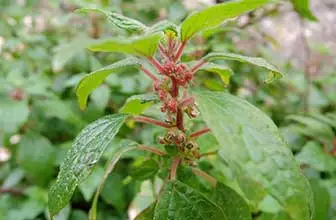Allergies
Olive tree pollen
Allergy to olive tree pollen (Olea europaea) is present in regions with a Mediterranean climate. The tree belongs to the Oleaceae family, made up of more than 600 species, including jasmine, lilac, ash and privet. It is native to the Mediterranean basin, but olive groves can be found in other parts of the world, such as China, Australia, Argentina and California. Flowering depends on temperature as well as on rainfall, but it is usually in mid-spring when there is a higher concentration of pollen. Since the olive tree is from the Olaceae family, it can cause allergies during the flowering season of other trees, so the period of affectation ranges from late winter to late spring. Most people who are allergic to olive pollen are affected by the Ole e 1 protein, but there are up to 12 proteins capable of causing allergies. Proteins 7 and 9 indicate severity to those who suffer from them. The most common symptoms are rhinitis, bronchial asthma and skin changes. As a prevention, it is advisable to avoid going outside at times of highest pollen concentration (mainly at dawn and dusk, especially when there is a strong wind), install anti-pollen filters in the air conditioning and car, carry sunglasses when going outside, showering and changing clothes when you get home, and not laying outside.
Alérgeno recombinante para IVD
TYPE
Especie
ALÉRGENOS RECOMBINANTES
Name, references, and description
Tipo de reactivo
- Alérgenos/Antigenos
- Bloqueadores
- Anticuerpos
Características Reactivos
- Humana
- Animal
- Allergies
-
Olea europaea
-
- Ole e 1
- RAL0012
- Proteins similar to Ole e 1
-
- Ole e 2
- RAL0010
- RAL0010BIOT (biotinylated)
- Profilin
-
- Ole e 5
- RAL0047
- Superoxide dismutase [Cu-Zn]
-
Brochures
- Rekom Biotech catalogue
- Recombinant proteins for in vitro diagnosis of allergies
- Recombinant allergens for diagnosis olive allergies
Videos
Especialistas en alérgenos recombinantes para tests de anticuerpos de alérgenos
We ensure a commitment to absolute confidentiality regarding all information received and generated related to your project.
-
[[carrito.product.name]]
- [[sku.sku]]
Or if you prefer...
We will analyze your request to prepare a quote tailored to your needs.
-
[[carrito.product.name]]
- [[sku.sku]]
As manufacturers, we can adapt our products to your needs.
Contact us!







